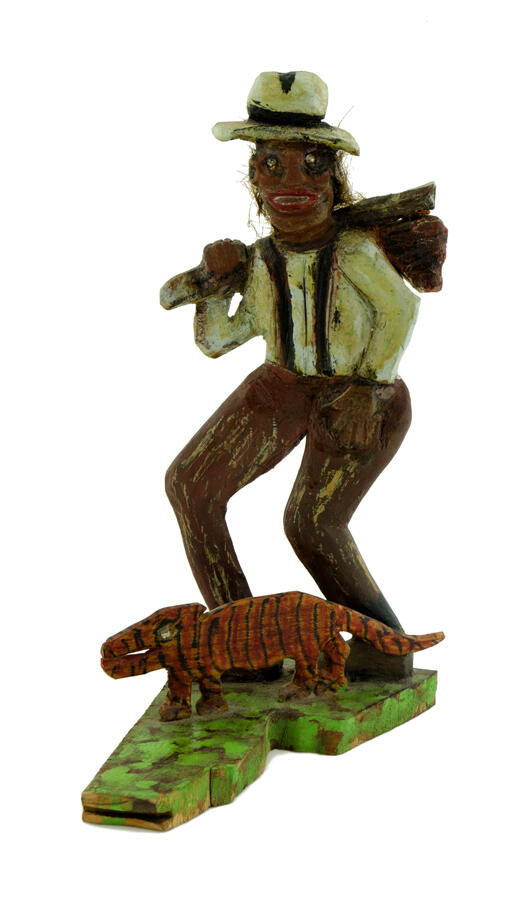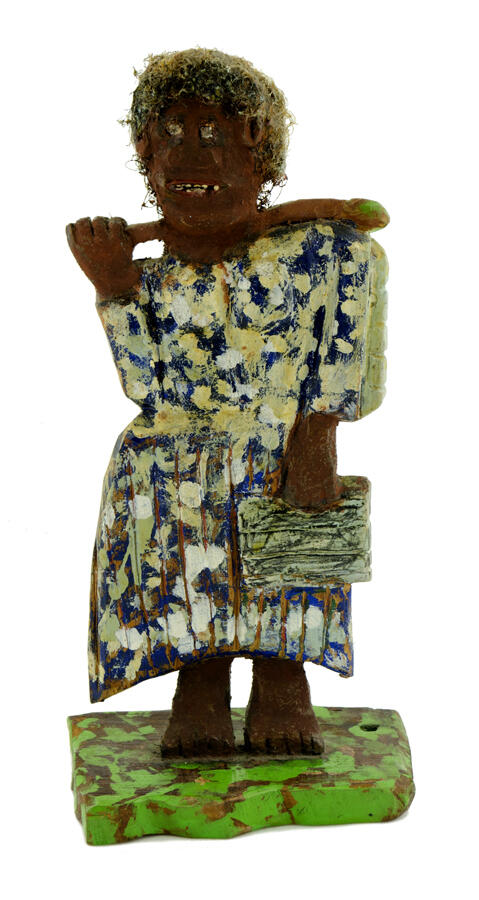Introduction
The piece of art under analysis is Migration North, figures carved from wood by an American folk artist Elijah Pierce in 1976 (see figure 1 and figure 2). Currently, both figures can be seen at the Columbus Museum of Art, where the greater part of Pierce’s heritage is exhibited. The figures have a biographic background because it is believed that the carver depicted his parents on their way from slavery to freedom. On the other hand, Pierce himself made a journey north in search of a better life (Wolf, 2017).


Subject
The subject of this piece of visual art includes two figures of a man and a woman. The figures are schematic, but it is typical of the other works of this artist.
Color
The colors used for these figures are rather dark. The skin of the characters is brown, and the clothes look old due to the choice of colors. The shirt and the hat of the man were probably white, but they are yellowish now, which is typical of the old things.
Shape
It is a three-dimensional piece of art that consists of two figures of people and an animal. All of them are of irregular shape. The shapes are clearly outlined, although quite schematic. The shapes allow identifying a man and a woman, but it is difficult to understand what the animal is depicted by the artist.
Motion
The figure of the woman is not moving, but the man bends his knees as if trying to crouch.
Symbols
The art object itself is a symbol. It is considered that Elijah Pierce depicted his parents during their journey from slavery to freedom after Emancipation. Thus, these wooden figures symbolize his respect for his parents and all other people who were slaves but did their best to have a better life for themselves and their children after the Civil War.
Perspective
The aspect of perspective is not applicable to the analysis of this piece of art since it is not a graphic picture but a figure.
Line
The lines of the figures are close to natural but more schematic. Both figures of people, as well as the figure of the animal, have curved lines the resemble those their prototypes had.
Space
It is difficult to evaluate the aspect of space since figures of the man and the woman are on separate stands and thus can be placed at any distance from each other.
Medium
The major medium for this piece of art is wood because the figures are carved. Also, the figures are painted to differentiate the faces and clothes of the people. Moreover, fiber and rhinestones are used in both figures to make hair and eyes, respectively.
Expressive Content
This piece of art provokes controversial feelings. On the one hand, after a quick look, it does not resemble a piece of art at all but is more like the first try of wood of a beginning carver. Still, after reading the life story of the artist and understanding the historical background, there cons awareness that this simplicity was not accidental. People who decided to leave their places and move were looking for a better life for themselves and their children, and Pierce was one of them (“Elijah Pierce. Biography,” n.d.). These people were poor and had almost nothing to carry with them. On the whole, the figures by Pierce reflect the idea of poor people on the move and make a spectator feel the spirit of that time.
References
Elijah Pierce. Biography. (n.d.). Web.
Migration North. (1976a). Web.
Migration North. (1976b). Web.
Wolf, J. (2017). Elijah Pierce: An American Journey. Folk Art Society of America. Web.